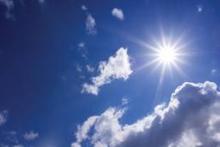MADRID - Solar UV radiation may protect against melanoma of the vulva, a new international study suggests.
This and other recent studies have demonstrated that UV radiation is a double-edged sword in melanoma, acting predictably as a well-established risk factor for cutaneous melanoma in susceptible individuals, while paradoxically decreasing the incidence of melanoma at non-sun-exposed sites, Dr. Isabel Longo reported at the 13th World Congress on Cancers of the Skin.
Sunshine's most likely protective mechanism against vulvar melanoma involves UV's stimulation of vitamin D synthesis, said Dr. Longo, a dermatologist at Gregorio Marañón University Hospital, Madrid.
The vulvar melanoma study, "Where the Sun Does Not Shine: Is Sunshine Protective Against Melanoma of the Vulva?'" was led by Johan Moan, Ph.D., of the Institute for Cancer Research at the Norwegian Radium Hospital, Oslo.
He and his coworkers analyzed melanoma trends over time and geography in the United States, Sweden, Germany, and Australia. They concluded that while the incidence of cutaneous melanoma on sun-exposed skin sites increased with decreasing latitude - moving north to south in the Northern Hemisphere and oppositely in the Southern Hemisphere - the incidence of vulvar melanoma followed the opposite latitudinal trend.
The most likely explanation, according to the investigators, is that solar UV-stimulated vitamin D synthesis in sun-exposed skin - greatest at latitudes closest to the equator - boosts serum levels of the vitamin, providing protection against melanoma at non-sun-exposed sites such as the vulva. However, these higher serum vitamin D levels are insufficient to protect against solar UV's cutaneous melanoma-promoting effect (J. Photochem. Photobiol. B. March 12, 2010; Epub ahead of print PMID: 20359907).
When the investigators analyzed melanoma incidence trends in the four countries over time, they observed that whenever cutaneous melanoma rates flattened or decreased - presumably in response to public health campaigns regarding sun protection - vulvar melanoma rates increased.
Dr. Moan and colleagues also recently demonstrated in an analysis of Norwegian Cancer Registry data for 1966-2007 that cutaneous melanoma rates for all body sites exhibited a strong latitude gradient, with a 2- to 2.5-fold greater incidence in the south of the Scandinavian nation as compared to the north (J. Photochem. Photobiol. B. April 6, 2010; Epub ahead of print PMID: 20430639).
Dr. Longo cited evidence suggesting that higher serum vitamin D levels may improve melanoma survival. For example, in a prospective cohort study involving 872 melanoma patients in the United Kingdom., investigators found that higher serum vitamin D levels at diagnosis were associated with a thinner tumor Breslow thickness and also - independent of Breslow thickness - with better survival (J. Clin. Oncol. 2009;27:5439-44).
This work followed an earlier study that found sun exposure to be inversely associated with death from melanoma in 528 patients followed for 5 years. Patients with evidence of solar elastosis had a 50% relative risk reduction, while those with a history of intermittent sun exposure or ever having been severely burned were 40% less likely to die from their skin cancer. Proposed mechanisms involve vitamin D's antiproliferative and proapoptotic effects. Alternatively, sun exposure may trigger less aggressive melanomas by enhancing DNA repair capability (J. Natl. Cancer Inst. 2005;97:195-9).
As to how to advise patients to increase their serum vitamin D levels, Dr. Longo was emphatic: no tanning beds."The high UVA levels and risk of sunburn overwhelms any possible benefit regarding vitamin D metabolism," she said.
Dr. Longo stressed that "not much" sun exposure is needed to achieve optimal serum vitamin D levels. UV-induced vitamin D synthesis is maximal at less than 1 minimal erythema dose - that is, a 5-minute exposure in the summer for fair-skinned individuals (10-30 minutes if sunscreen is used).
Patients can be reassured that regular use of high SPF sunscreens will not lower their serum vitamin D level. A review of the published evidence by investigators at the University of Edinburgh reached this conclusion based upon two findings: people generally apply sunscreen inadequately, and they tend to spend more time in the sun than nonusers of sunscreens (Br. J. Dermatol. 2009;161:732-6).
More research is clearly needed on the risks and benefits of enhancing vitamin D through sun exposure. Dr. Longo said expectations are high in Europe that important insights will come from the large, ongoing, European Union-funded ICEPURE study (Impact of Climatic and Environmental factors on Personal Ultraviolet Radiation Exposure and human health).
Dr. Longo reported no conflicts of interest.


